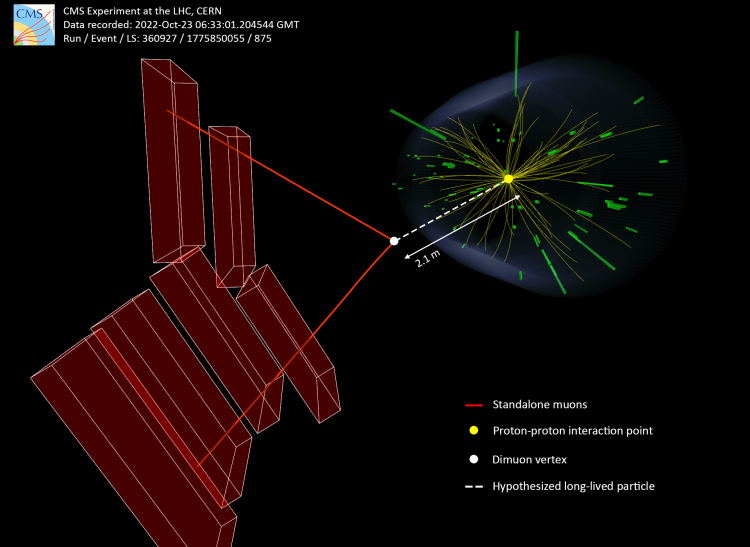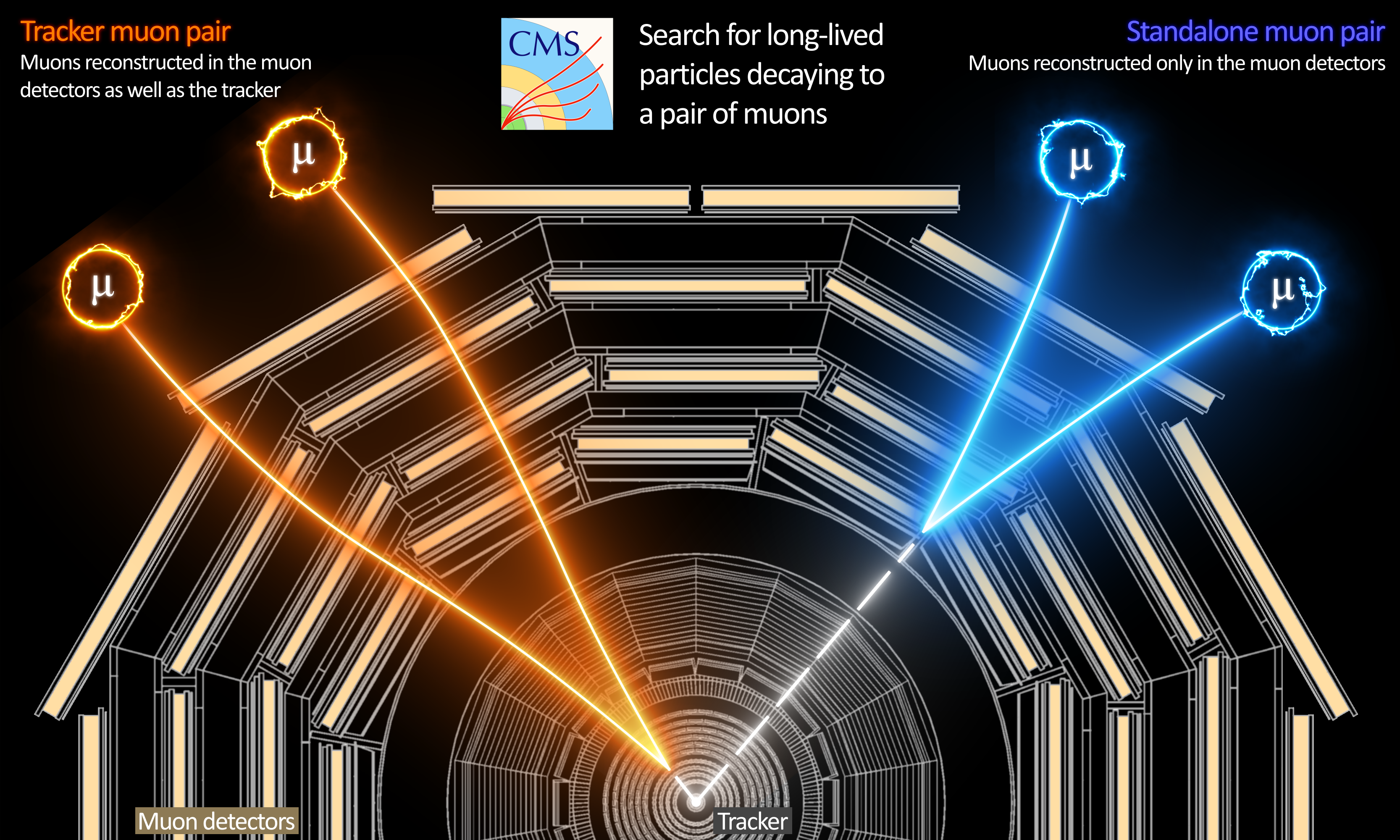
The first search for new physics using LHC data collected in Run 3 has been presented by CMS. It was shown during this year’s EPS conference in Hamburg and relied on both the new data and refinements of the trigger system made for Run 3. It marks the first of many upcoming physics results to benefit from Run 3. The LHC Run 3 started in July 2022 and has a higher instantaneous luminosity than previous runs, meaning there are more collisions happening at any one moment for researchers to analyse.
This study looks at the possibility of ‘dark photon’ production in the decay of Higgs bosons. Dark photons would travel a certain distance in the detector before decaying into ‘displaced muons’. If you retrace the tracks of these muons, they would not reach all the way to the collision point, as they actually come from a particle that has already moved some distance away. This would be reconstructed using the complementary information in the inner tracker and outer muon subsystems of the CMS detector, allowing the teams to study muons displaced from the collision point by distances from a few hundred micrometres to several meters!

Figure 1: Illustration of two types of long-lived particles decaying to a pair of muons, showing how the signals of the muons can be traced back to the long-lived particle decay point through information from the tracker and muon detectors.
Dark photons are exotic long-lived particles. ‘Long-lived’ because they have an average lifetime of more than a tenth of a billionth of a second. This may seem like an incredibly short amount of time, but in terms of the particles produced in LHC collisions it is actually quite long; the Higgs boson, for example, has a lifetime ten billion times shorter! In fact, particles with lifetimes longer than a thousandth of a billionth of a second are already classed ‘long-lived’. In terms of the CMS detector, this means that a dark photon would travel a measurable distance before decaying, making it potentially detectable. ‘Exotic’ because they are not part of the Standard Model of particle physics, which is the leading theory guiding our understanding of the fundamental blocks of the universe. However, the Standard Model does not answer all the questions within particle physics, and so searches for phenomena ‘beyond the standard model’ continue.
In order to more effectively search for them, the team refined the trigger system between Run 2 and Run 3. The LHC produces tens of millions of collisions every second, but only a few thousand of them can be stored, as recording every collision would consume all the available storage very quickly! This is why CMS is equipped with a real-time data selection algorithm called the trigger, which decides if a given collision is interesting. Therefore, it is not only a higher volume of data that could reveal evidence of the dark photon, but also how the trigger system is fine-tuned to look for specific phenomena.
The displaced-muon team added their non-pointing muon algorithm to the trigger. The new coverage of the triggers (see Figure 2) vastly increases the range of momenta of the muons that would be picked up, allowing the team to explore totally new phase space regions where long-lived particles may be hiding.

Figure 2: Overview of the phase space coverage of the triggers. Muon momentum threshold against the threshold on distance of its trajectory from the collision point. The red area corresponds to the new triggers introduced for Run 3 data taking.
This research has set up the displaced muon team well. They will continue using the most powerful techniques to analyse all data taken in the remaining years of Run 3 operations, and hopefully look into the eyes of beyond standard model physics - the search for these elusive, exotic particles continues!
Read more about these results:
-
CMS Physics Analysis Summary (EXO-23-014): "Search for long-lived particles decaying to a pair of muons in pp collisions at 13.6 TeV with 2022 data"
-
Display of collision events: CERN CDS
-
@CMSExperiment on social media: LinkedIn - facebook - twitter - instagram
- Do you like these briefings and want to get an email notification when there is a new one? Subscribe here

